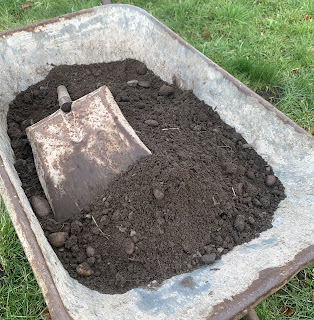First cut not the deepest
In the world I grew up in, one could mow a lawn during the October half-term and not need to revisit until February. I recall the lawn management regime advocated by DG Hessayon. Monoculture. Close-cropped. Scarified. Weed killed. Fertilised.
And the world I grew up in did not tolerate a species-rich lawn .. ‘Weeds?!’
My dad wouldn’t recognise a lawn with ‘no-mow’ sections to support invertebrates. He’d scratch his head at the close-nibbled ‘lawns’ around the vole burrows in the grass.
And would have thrown his hands up in horror at the twenty five mole hills I counted yesterday.
This years mild winter has seen the lawn become a thick thatch over six inches long.
So, while the wind is blowing and the grass is dry it’s time for the first mow of the season before the crocus appear.
Still on a high setting so not to stress the grass, the lawn now looks like a raggedy shag-pile.
We have lived a charmed life so far. Cockchafer beetles immitating invertebrate quidditch snitches buzz and crash into our summer moth light. They lay their eggs in pastures and lawns. Cockchafer grubs are as irresistible to badgers as are chocolates to my elderly mum. Our next-door neighbours have had their lawn utterly trashed by local badgers on nocturnal bug hunts. Yummy cockchafer grubs. The feast is coming.
After the cut, a cubic metre of organic grass cuttings awaiting incorporation into the compost. And half a wheelbarrow of mole hill soil for incorporation into our own potting compost or for adding to the compost bins where we hope our slow worms will once again thrive.
The final touch on the lawn will be the running feet of children: the best part.


